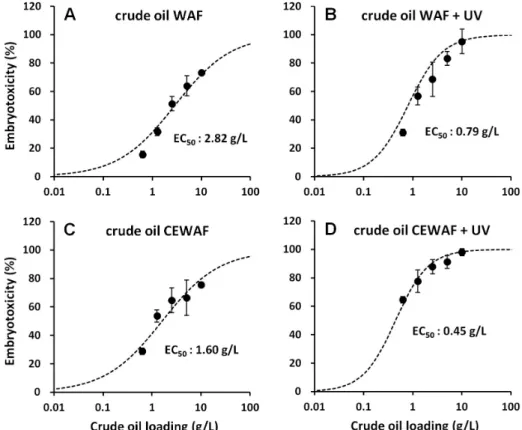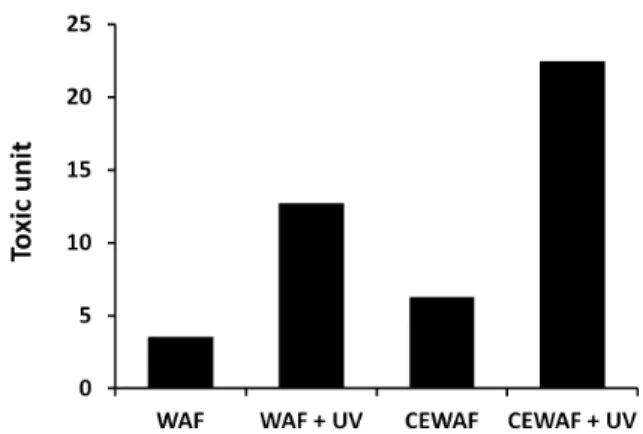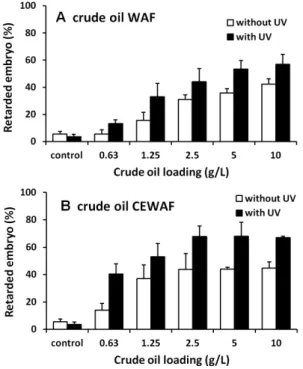Received: March 15, 2013; Accepted: March 18, 2013 Corresponding author : Chang-Hoon Lee
Tel: +82 (32) 670-7210 e-mail: chlee@neoenbiz.com 1225-3480/24466
This is an Open Access article distributed under the terms of the Creative Commons Attribution Non-Commercial License with permits unrestricted non-commercial use, distribution, and reproducibility in any medium, provided the original work is properly cited.
Effects of ultraviolet radiation on the toxicity of water-accommodated fraction and chemically enhanced water-accommodated fraction of Hebei
Spirit crude oil to the embryonic development of the Manila clam, Ruditapes philippinarum
Chang-Hoon Lee
1, Chan-Gyoung Sung
1,2, Sin-Kil Kang
1, Seong-Dae Moon
1,3, Ji-Hye Lee
1and Jong-Hyeon Lee
11
Institute of Environmental Protection and Safety, NeoEnBiz Co., Bucheon 420-806, Republic of Korea
2
Department of Energy and Environmental System Engineering, University of Seoul, Seoul 130-743, Republic of Korea
3


